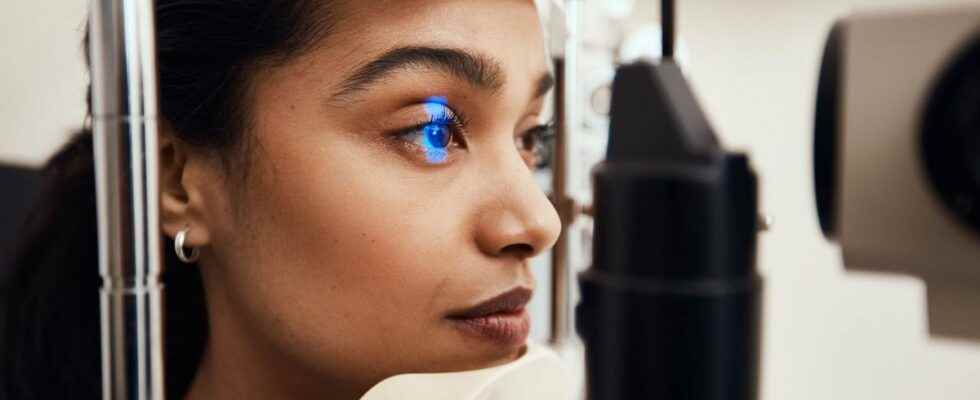Published on
Updated
Reading 2 mins.
in collaboration with
Catherine Albou Ganem (ophthalmic surgeon)
Medical validation:
November 10, 2022
To improve the management of age-related macular degeneration, the Haute Autorité de Santé (HAS) has just published new recommendations for early detection of the disease.
AMD affects about 8% of the French population, but its frequency increases with age. Without early identification or appropriate treatment, vision deteriorates and can lead to a loss of autonomy. In this context, the Haute Autorité de Santé has updated its recommendations for healthcare professionals.
AMD: people at risk
According to the press release, some people are particularly at risk of developing the disease. These are those with:
- family history (main risk factor);
- a form of obesity;
- a diet low in omega 3 or high in saturated fat;
- tobacco addiction.
All people over the age of 50 and presenting one or more of these risk factors must have their vision monitored regularly, specifies the HAS.
“This monitoring is to be carried out regularly and during an examination by an ophthalmologist every 1 to 2 years..”
This screening is all the more important in view of the “silent” aspect of the disease: for many years, the person affected does not show any symptoms. This is the early stage of AMD, also called age-related maculopathy (AML).
The High Authority for Health (HAS) recommends using the Amsler grid (a tool easily accessible on his website) to detect a distortion of the lines or a dark spot in the center of vision, called a scotoma.
This test must be carried out while wearing corrective glasses or contact lenses as follows:
- Hide the left eye and stare at the center point of the grid.
- Position yourself at reading distance (about 25 centimeters from the screen).
- Analyze the image.
- Repeat the procedure with the right eye.
If the grid lines are broken, wavy, or blurry, prompt medical attention is advised.
To identify AMD, Dr. Albou-Ganem recommends applying a simple daily trick.
“The first sign to spot is visual discomfort“, specifies the eye surgeon before adding “that if one does not have access to the Amsler grid, the observation of a simple straight line (door, wall) is a good diagnostic element. If it is deformed or broken, you must quickly consult.”
Other symptoms should also alert you, such as: distortion of the images or objects observed, a drop in visual acuity, a reduction in the perception of contrasts, a change in color vision, discomfort in night vision, etc.
